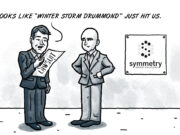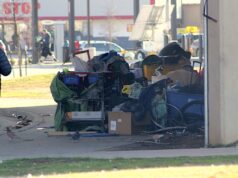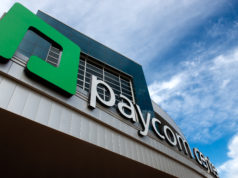
The OKC City Council’s push to weaken Oklahoma City’s historic preservation system is deeply rooted in the notion that property owners should be able to do with their land whatever they wish. It is a narrow concept that ignores a broader set of issues which demand more thoughtful and considerate deliberation and cannot be addressed by the sort of piecemeal revision the council is on course to approve.
At issue is a proposal that would bar the city’s Historic Preservation Commission or Planning Commission from initiating proceedings for landmark designation when an owner does not seek it. The OKC City Council alone would assume that power.
As originally written, the ordinance would also have allowed the council to initiate declassification of historic landmarks and districts. After our Crown Heights-Edgemere Heights Neighborhood Association complained and Mayor David Holt criticized such far-reaching language, ordinance co-sponsor and Ward 8 Councilman Mark Stonecipher agreed to revise that section.
The overall concept, however, remains badly flawed.
First Christian Church situation used as excuse for changes
Proponents say there is an urgent need to amend historic preservation law because the city risks a federal lawsuit by pursuing landmark designation in cases where a property owner opposes it. In fact, this is almost unheard of in Oklahoma City.
The lawyer for First Christian Church did threaten suit last spring when the Historic Preservation Commission opened landmark proceedings as Crossings Community Church tried to buy part of the First Christian campus at the corner of N.W. 36th Street and North Walker Avenue. The transaction fell through when Crossings discovered renovations would cost millions of dollars. The long-term fate of First Christian Church — with its iconic egg-shaped sanctuary — remains in significant doubt.
But at least to the public’s knowledge, there is no new deal in sight for that property or any other potential landmark. The City Council, then, is trying to fast-track a solution to a problem that does not exist.
We are talking here not just about an individual parcel of land but about long-term policy that affects the very fabric of our city. A better course would be to examine it all as part of the “preserveokc” historic preservation master planning process scheduled for completion in March.
Using First Christian as an example raises a series of questions symbolic of the individual issues at stake in every historic preservation decision. Straight up, can the First Christian building be saved given its structural and environmental problems? What if a buyer cannot afford to do so, or simply does not want to do so? If the community decides the church must be preserved, where will we find the money? Ward 5 Councilman David Greenwell has made clear he has no appetite for using public funds on such a project. As a developer friend recently observed to me, “People have all these great ideas. The problem is, nobody wants to write a check.”
If the church is sold and those 30-plus acres are redeveloped, what goes onto that land? First Christian sits prominently on the borders of four neighborhoods, two of which are Historic Preservation Districts. It may not itself lie within an HP District, but the building and its property comprise a prominent part of all four communities. How do we manage the impact on those neighbors? We must also consider how these decisions affect their quality of life and property values.
Historic preservation deserves broader discussion, not kneejerk reaction
While Greenwell argues for owners’ rights to “enjoy” their property as they see fit, he is silent about the price paid on other side of the fence. My wife and I moved to Crown Heights precisely because there are regulations preventing the sort of tear-down wave that has washed over Nichols Hills for more than a decade.
There, we saw dozens of houses built out of scale and proportion to the homes around them. We knew several people whose sight lines and sunlight were obliterated — their ability to enjoy their property damaged beyond recovery. There came a tipping point: Nichols Hills is now implementing a design review system to create some balance.
Taken to an extreme, perhaps my property rights should excuse me from having to mow my lawn or cut down trees that are knocking over my neighbor’s fence? I doubt councilmen Stonecipher and Greenwell would agree with that.
Likewise, there is little historic preservation in the backyards of the five councilmen who voted Sept. 10 to advance this ordinance. We encourage them to remember that thousands of people choose to live in Historic Preservation Districts and Urban Conservation Districts. The action the council is taking would rob those residents of an established process which allows them a greater voice when changes are afoot.
What, exactly, is our collective attitude toward preservation? During debate over this ordinance last month, Ward 2 Councilman James Cooper lamented “a history of our history not being honored.” I once stood in the Chase Tower with a prominent civic leader, looking down on all of the open space created during what is now generally considered an ill-considered urban renewal frenzy in the 1960s and ‘70s. This guy shook his head and said, “We tore too much of it down.”
Online discussion about this proposed ordinance suggests it is time to revisit OKC’s historic preservation practices in a comprehensive manner. For instance, current rules hinder homeowners from taking full advantage of advances in materials and technology for the replacement of windows. And the requirement that I must use concrete for my new driveway flies in the face of current knowledge that permeable paving materials are far more environmentally friendly.
Add to this a newer school of thought gaining traction in cities across the United States: That the sort of low-density zoning that is a hallmark of Historic Preservation Districts and Urban Conservation Districts is a barrier in terms of race, class and community-building. Many believe this should be reconsidered as we figure out how to shape our urban landscapes in the 21st century.
All in all, my point is simple: Historic preservation is complicated stuff. It cries out for input not just from the politicians but from preservation and planning professionals, as well as from citizens who deserve a say in shaping their city’s future. While the OKC City Council is scheduled to hold an initial public hearing on this change at its Tuesday meeting, a final vote on the issue would be scheduled for Oct. 22.
Councilmembers owe it to the people they serve to address these issues in a more thoughtful and comprehensive manner.
OKC City Council’s proposed ordinance on historic preservation districts
